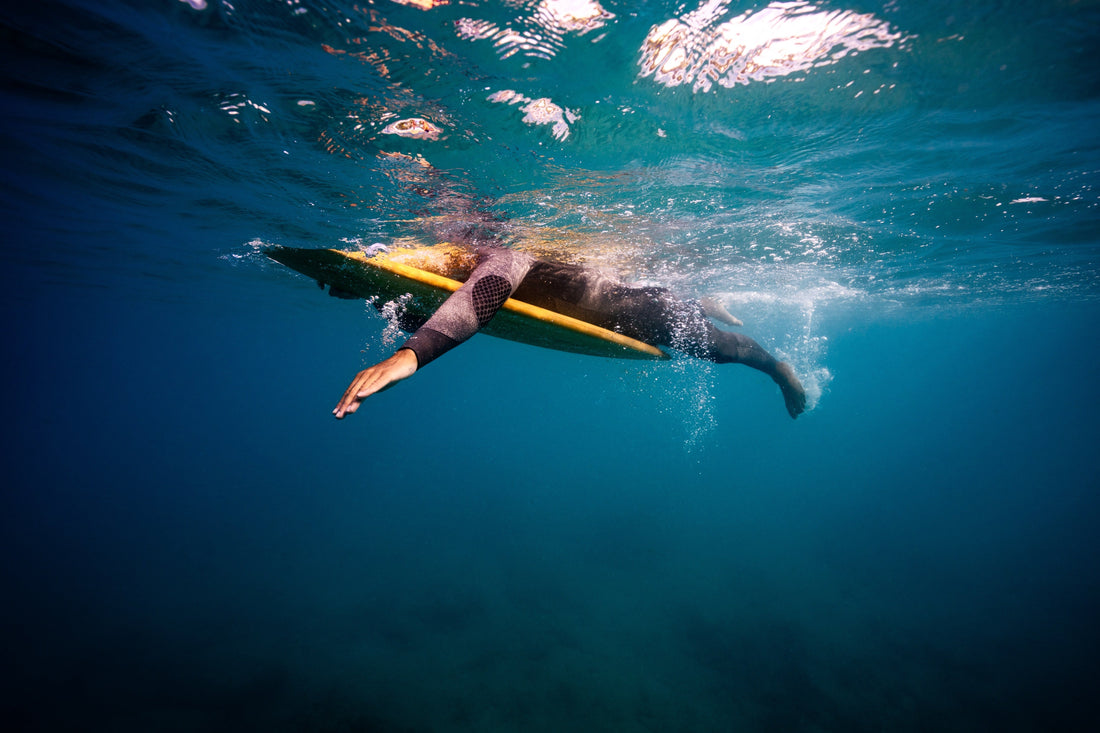One of the oldest myths in the ocean is that wearing a grey or black wetsuit makes you look like a seal, and therefore more likely to be bitten by a shark. But does this theory actually hold water? Let’s dive into what the science says about shark vision, wetsuit colours, and how you can reduce your risks in the water.
Sharks See Differently Than Humans
Sharks are incredible predators, but their vision works quite differently from ours. Most shark species are colour blind, seeing the world primarily in shades of grey, as confirmed in a 2021 study published by the Royal Society.
What sharks do see well is contrast and silhouettes. In clear water, a human on a surfboard, regardless of wetsuit colour, can still appear as a dark, seal-like figure from below.
Does Wetsuit Colour Matter at All?
While sharks don’t see in colour, contrast can still play a role in how visible you are, especially in different lighting conditions. Some studies suggest that darker wetsuits can make you more visible against a bright surface when viewed from below, but this does not necessarily increase the risk of attack. Even so, our grey wetsuits provide less contrast against the water than a typical black wetsuit.
Researchers continue to test wetsuit patterns and colours (including camouflage and ‘scare off’ patterns) to see if they can confuse sharks or make humans look less like prey. Some wetsuit brands have experimented with disruptive patterns, but scientific consensus on their effectiveness is still limited.
The Mistaken Identity Myth is More Complex Than You Think
The idea that wearing black or grey makes you look like a seal oversimplifies shark behaviour. Shark bites are more often the result of mistaken identity based on environment, visibility, behaviour, and silhouette rather than colour alone. Splashing, poor visibility, presence of food and being in a known shark feeding area are much bigger risk factors than what you’re wearing.
How Does Shark Stop Approach Shark Bite Mitigation?
At Shark Stop, our focus isn’t on trying to trick sharks visually, but rather on reducing the severity of a bite if it occurs. Our wetsuits use ultra-strong UHMWPE nanofibres integrated into the neoprene, providing a protective layer that reduces puncture depth and tearing if a shark bites.
While our suits are not designed to prevent a bite or make you invisible to sharks, they are designed to reduce injury severity, giving users precious extra time to seek help.
Final Thoughts: Behaviour Over Colour
The science is clear, what you do and where you are matters more than what colour wetsuit you wear and high contrast colours are more likely to gain a shark’s interest as opposed to grey or black. Staying informed, avoiding high-risk areas, and using proven safety gear like Shark Stop wetsuits are smarter ways to reduce your risk.
So, whether you wear a black, grey, or patterned wetsuit, remember that awareness and education are your best shark safety tools.

